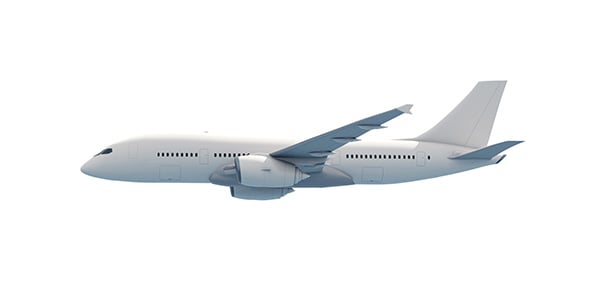The three states of matter are
The purpose of aircraft trim systems is to
Matter is any substance that has mass and
Atoms are made up of
What is the purpose of the arrow on a check valve?
The purpose of the landing gear warning horn is to
The most outstanding characteristic of a liquid is its
When cleaning aircraft wheels, you should not use
If 50 pounds per square inch (PSI) of cylinder pressure acts on a...
What term describes current that reverses its direction at regularly...
A mojor disadvantage of multiple disc brakes is that they
The force that acts upward at a right angle to the direction of the...
If you apply 24 volts through a total resistance of 6 ohms is a...
When a 8-square-inch piston moves 5 inches within a cylinder, what...
What is the design that uses any combination of longerons, stringers,...
What is the electrical pressure that causes electrons to flow through...
What usually produces flow in a pneudraulic system?
Who was among the first to study the compressibility of gases?
A ture whose cross-section area is gradually reduced to smaller size...
The purpose of the antiskid system is to
What type of motor can operate on alternating current (AC) or direct...
The most common type of material used for fuselage construction is
The majority of the aircraft circuit protection devices are normally...
Atmospheric pressure at sea level is
A barometer is designed to measure pressure in
The nickel-cadmium battery can be fully charged only by
Electrons can be released from their outer orbit by all of the...
Current flow in the most aircraft circuits is controlled by
What are the reference locations in the vertical direction measured...
Movement about the vertical axis is called
For tires 24 inches or greater outside diameter, the tire must be...
What maintains an airtight seal between split wheel halves?
What supplies rotary power to the input gear of the constant speed...
Installed bearing races should be free of scratches, dents, and
The purpose of a hydraulic motor is to convert hydraulic pressure into
When soft iron is brought close to a permanent magnet it is
The main difference between inspection plates and panels is
The greater the current flow through an electromagnet, the
A network of ultra cracks that form on or under the surfave of...
The stress that resists the force tending to cause one layer of...
When any force causes a solid to change permanently, the solid is said...
The structural members used to give shape to the aircraft and provide...
What position must the landing gear control handle be in before...
The advantages of an electricity controlled solenoid valve is its
Engine mounts are typically made of corrosion-resistant steel that is...
Which of these allows normal operating speed of hydraulic actuator in...
Wich of these is attached to the trailing edge of a horizontal...
The purpose of the torsion links on a main landing gear is to
Aircraft wheels are normally constructed of
The purpose of a hydraulic reservoir are to
The size of one micron is four
The purpose of an actuating cylinder is to transform fluid pressure...
Which actuator type slows down piston travel when the piston nears...
Split wheels are balanced
Another name for a flapper check valve is
Variable-volume pumps do not require a separate pressure-regulating...
The force that acts parallel to the relative wind is
The amount of fluid a pump produces on each cycle or revolution is...
Electomagnectic devices capable of sensing magneticaly conductive...
The wing design used on most modern military aircraft is
A unit that is a combination of the landing gear shimmy damper and...
A 24-volt nickel-cadmium battery has
What the type of bearings is used on aircraft wheels?
What provides for cooler operation in a Statopower variable-volume...
What slows the free fall of the main landing hear during the emergency...
The purpose of wing flaps is to
The underspeed switch (USS) on the 60/80 kilovolt ampere (KVA)...
A battery's internal component that is a grid or framework which...
In the Stratopower variable-volume pump, what holds the pistons in...
A shunt-type motor has
What pneudraulic system component uses double-acting balanced...
When making a right turn, the relative position of the ailerons is the...
The output of the constant speed drive (CSD) used to drive a 60/80...
The primary force an airfoil has to defeat is
A manual poppet-type selector valve is in a working position when...
The purpose of a standpipe in a reservoir is to
When referring to hydraulic hand pump, double-action means
How is the piston installed in a accumulator?
In a hydraulic system, the hydraulic manifold provides a location...
What pneudraulic system component uses a single-acting actuating...
Brake fade is defined as a gradual braking action
The main parts of an aircraft tire are the tread and sidewall,
What prevents the lock solenoid from energizing when the nose landing...
The Major advantage of the manual slide-type hydraulic selector valve...
What prevent pressure buildup and separation of cord plies or tread...
The fixed vertical surface of the empennage is called the
The purpose of deboosters is to
What prevents tire explosion from excessive heat buildup?
A permanent magnet is produced from a material with
Turbulance affects fluid-flow in a hydraulic line by
The methods used to cool brushless alternating current (AC) generators...
The reservoir supplies hydraulic fluid to a hand pump
How is the motion of the landing gear control lever transmitted to the...
What automatically compensates for brake wear on the segmented rotor...
What are the basic units of a hydraulic hand pump system?
Normally, what positions hydraulic selector valves?
When pressure in a hydaulic system with a variable-volume pump...
The difference between a selector valve and a servo valve is that the
Which flight control surface is a longitudinal control surface
The bearing cone of an aircraft wheel bearing is also called the
















